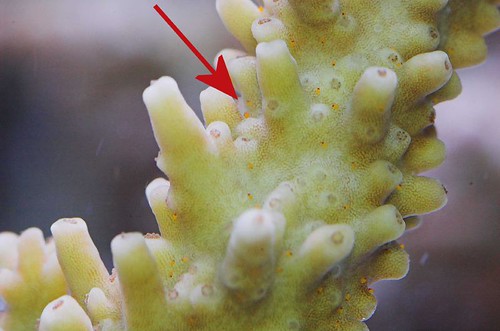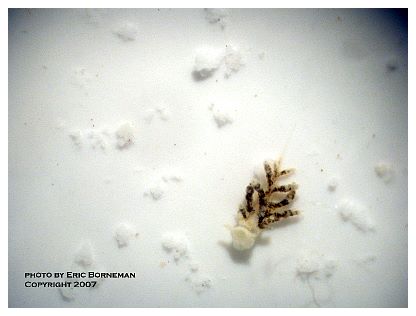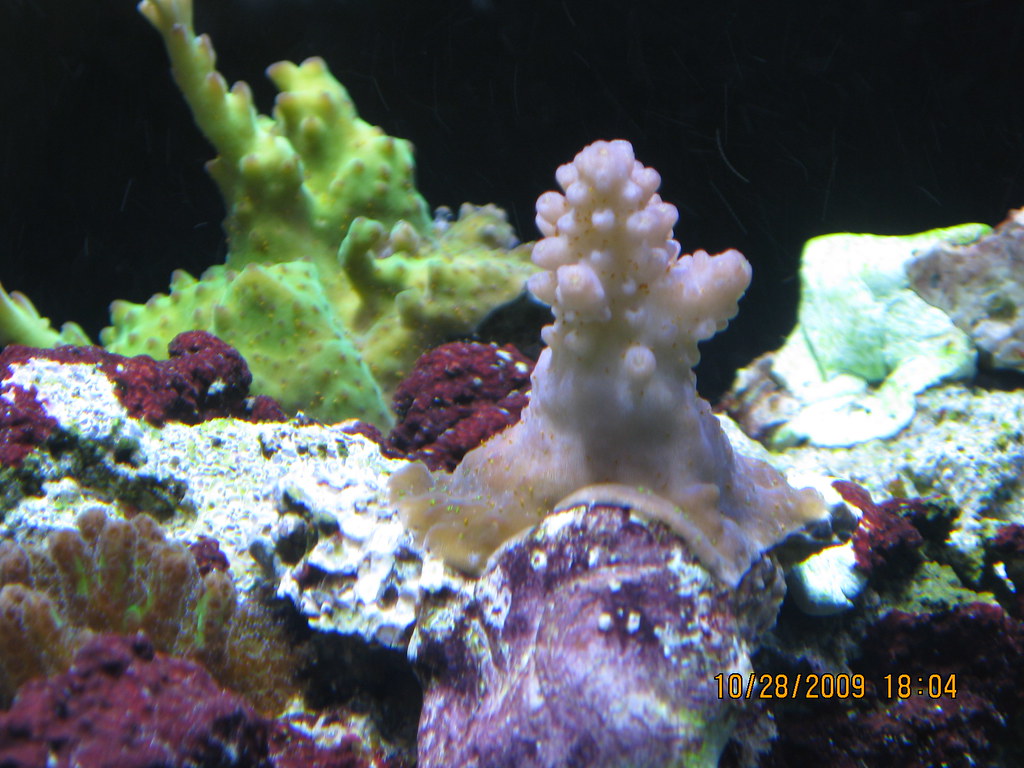Great thread Mark

. I have had my fare share of experience with any to these pest. While RB's have been a round for awhile now there is still alot of questions as to treatment. Dorton was the first to come up with a treatment for RB's
The "CURE" for Red Acro Bugs
while his treatment does work, some including myself have had re-occurrence after treatment. One treatment that I have found to work with better end results is one that Eric Borneman suggested. While the link to his site doesn't work I'll will post it here:
""Suggested Treatment Protocol
Based on my observations and work described here, I suggest the following as a treatment protocol for Acropora colonies that have been colonized by the parasitic copepod, Tegastes acroporanus ("red bugs") as a modification of the novel protocol developed by Dorton. The process is more labor intensive, but should be more effective in preventing any future need to treat Tegastes-parasitized Acropora in the display tank (provided quarantine is utilized for any new coral acquisitions). It should also help to reduce the current epizootic within reef aquaria by limiting the potential for spread between tanks by trading or purchase of Tegastes-colonized fragments or colonies.
1. Assume that every Acropora in the tank is colonized, even if there are not visible copepods on the colony.
rationale: copepods are cryptic on normally colored colonies, can be cryptic on pale colonies, and are small enough to be easily missed by examination through tank glass or even by direct observation with the naked eye. Furthermore, the copepods are motile, and swim between colonies. Therefore, any colonies removed for treatment may leave unnoticed indivuiduals on other colonies or allow for copepods that abandon hosts being removed for treatment to locate uncolonized Acropora.
2. All Acropora colonies should be removed from the tank and placed into a container for examination. This can be perfored one colony at a time. A magnifying glass, magnifying lamp, dissecting scope or some other method should be used to slowly and carefully examine each colony from every possible angle. The Corals will tolerate extended handling periods out of water to facilitate examination. The copepods will be covered with a smooth and somewhat shny carapace and with coral mucus and a thin film of water. Without examination from multiple light incidence angles, it is possible that individuals will go undetected. If a colony is too large or too densely branched to allow for a complete examination, consider it to be colonized. Any colonies that are determing to be free of copepods can be placed into a quarantine tank without treatment, but I would suggest reexamination prior to reintroduction to the main display tank.
rationale: Examination by the naked eye is insuficient to detect all copepods.
3. All Acropora colonies found to have copepods present should be treated in a treatment tank or container where dose levels and colonies can be carefully monitored. The treatment tank can be large or small, and can be used to treat many colonies at once or one at a time. The water should be circulating strongly across colonies to not only for drug exposure but to help dislodge dead copepods. Following treatment, each colony should be re-examined in water under magnification to ensure 100% kill rates. Copepods still attached to the coral can be probed with a needle, pin, pipette or syringe and removed from the colony. If copepods are found to still exhibit any motion, retreatment should occur immediately.
rationale: treatment in the tank should be avoided for several reasons: a) it will be impossible to assess whether or not a 100% kill rate has been achieved; b) in tank treatment will result in mass loss of other suscpetible species including amphipods, shrimps, lobsters, crabs, polychaetes, nematodes, copepods, and possibly other Invertebrates which have not been tested for toxicity to the drug ; and c) repeated treatments can result in resistance making future treatments more difficult.
4. Treatment dosage appears to flexible, if not variable. Given the apparent low toxicity to Corals even at elevated dosages, I would suggest a dose level equal or higher (up to 10x) than suggested by Dorton. Dorton suggestes three separate treatments of six hours. Upon examination of treated colonies, six hours appears to be insufficient for a 100% kill rate, while 12 hours seems to be more effective. In the one test where coral mortality was observed, the treatment time was only six hours, and in all other tests, no ill effects to the coral were seen with extended treatment times. It appears that time, and not dosage level, is the critical variable towards providing 100% kill rates for the copepods. Regardless of the dose or treatment duration, all colonies should be carefully examined before they are removed from treatment. For colonies being treated that are too large or densely branched to allow for examination, the treatment should be continued for 24 hours with careful monitoring to ensure that the colonies are enduring the treatment well and that the water does not become fouled from excessive mucus production, other fauna killed during treatment, or other stressors. If these conditions occur, treatment tank water should be dumped into buckets, sterilized by the addition of bleach to the water, and disposed down a sanitary sewage line. The treatment tank should then be refilled with tank water and new drug added to the water.
5. All treated Corals and completely free of Tegastes acroporanus, as well as those examined and found to be uncolonized (#2 above), should be placed into a quarantine tank filled with tank water filtered through a coffee filter or other filtration apparatus. The quarantine tank should have filtration, water flow and light sufficient to keep treated colonies alive for five days.
6. No Acropora should remain in or be placed back into the main display tank for five days. This is the longest period of time it has taken for any Tegastes acroporanus to survive without a host from observations to date. This assumes that there are no other surrogate hosts for this species, and that the observations of death from 3-5 days without a host are realistic of what would occur in a display tank.
rationale: It is possible, even likely, that during the removal of colonized Acropora, some copepods swim off the colony into the tank. They will seek out other hosts. It is also possible that some are in the tank at any moment seeking new hosts, even without the process of colony removal. As far as can be ascertained, they are direct developers and thus do not have a free-swimming larval stage and they do not lay eggs on the host or substrates that can later hatch. However, they can live without a host for several days. Ensuring that any copepods left in the tank after removal of hosts die requires, at my best estimate, 3-5 days. I suggest five days to be conserative.
7. After five days, colonies in quarantine should be re-examined under magnification and if found to be free of copepods, can be returned to the display tank. If copepods are found on any colonies, repeat steps 3-7."

























